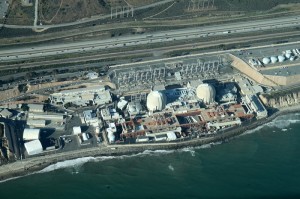 PART ONE – SONGS’ LETHAL LEGACY
PART ONE – SONGS’ LETHAL LEGACY
1,800 tons of spent nuclear fuel rods could create a ten-mile kill zone in Southern California
According to a June 27 report from Friends of the Earth (FOE) on SONGS’ “lethal legacy,” the last 44 years of energy production at San Onofre have left nearly 1,100 tons of extremely radioactive spent fuel rods overcrowded in pools designed only to hold them for 5 to 7 years. Other estimates of the total amount of hot rods at the site range from 1,400 to 1,800 tons according to several credible sources.
Should a pool be cracked by an earthquake or lose power to circulate the hot pools, the water would drain or evaporate away and the heat of the extremely radioactive rods could ignite a blaze. Not just any blaze. A spent fuel pond fire would be nearly impossible to extinguish and, according to a 2007 Nuclear Regulatory Commission disaster scenario involving SONGS’ pools on fire, everyone within ten miles of San Onofre would get a fatal dose of radiation.
Since 1968, SONGS has generated nearly 1,800 tons of highly radioactive spent nuclear fuel made up of 948,956 rods packed into 4,021 assemblies. There is so much high-level radioactive waste at SONGS that it triples the amount of ionizing goo stored at the most contaminated site in the country, the Hanford nuclear reservation in Washington.
The 29-page FOE study was authored by Robert Alvarez, a former senior advisor to the Secretary at the Department of Energy with expertise on the growing volume of waste piling up at reactors across America. Friends of the Earth funded the report as it did other work done to ensure San Onofre didn’t fire up its last damaged reactor without a surfeit of public hearings.
“The major risk from the reactors at San Onofre is over, but the radiation hazard from the pool-stored waste is even greater,” said Alvarez when the report was released. “As we saw at Fukushima, spent fuel in pools that were never designed for such concentrated and prolonged storage is highly vulnerable. Within six hours of losing water in the pools, more radioactive cesium could be released than was released in all nuclear weapons tests. The radiation dose to the thousands living within ten miles of the plant would be in the lethal range.”
The Friends of the Earth report and information uncovered by EnviroReporter.com suggest that these problems are not insurmountable. The closing of SONGS also shows that anything’s possible armed with the facts and the brass to back it up. That metal and more will be necessary to remedy the nuclear menace that SONGS could increasingly radiate over Southern California.
Solving these problems aggressively might even help put back to work some of the talented and experienced SONGS workforce, a thousand of whom have been laid off. Securing the spent nuclear fuel in dry casks and moving it to higher ground at SONGS are shovel-ready projects that could be funded by sources identified in the Alvarez report.
If geologic history is any measure, doing nothing to secure the spent fuel rods to withstand a huge earthquake at SONGS invites a black swan catastrophe. These radioactive wastes, including strontium-90, plutonium-239 and cesium-137 take thousands of years to cool down and remain lethal all the while. Failing to act to seal them off from the environment in case of any disaster or terrorist scenario, especially when the means and methods are available, is playing nuclear Russian roulette.
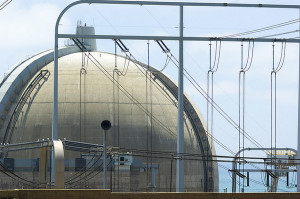 Even with the plutonium bullet chambered at SONGS, the company and the government continue to finger the trigger. The momentum created by the unprecedented closure of San Onofre may not be enough to secure the site from plaguing future generations. The will to force expedited dry casking of SONGS’ hot remains might only come when Southern Californians realize that the nuclear gun is pointed at them.
Even with the plutonium bullet chambered at SONGS, the company and the government continue to finger the trigger. The momentum created by the unprecedented closure of San Onofre may not be enough to secure the site from plaguing future generations. The will to force expedited dry casking of SONGS’ hot remains might only come when Southern Californians realize that the nuclear gun is pointed at them.
Government and company attitudes, policies and regulations have led to so serious a safety situation that it is unclear whether these entities can get the multi-decades-long job done. Regardless, the scheme to make customers pay for this calamity continues though moves are afoot to stop billing for power that will never be delivered.
The catastrophic installation of two defective steam generators, at a ratepayer-paid cost of $671 million, have also resulted in unsafe spent fuel conditions, highly radioactive shipments of old plant equipment through unsuspecting communities, significant worker discontent, the worst safety record of any nuclear power site in the nation and questionable security for an obvious terrorist target.
Shuttering SONGS
Southern California Edison formally unplugged SONGS June 12. It was an unexpected victory for local groups allied with nuclear watchdog organizations whose legal maneuvering finally trumped SCE’s efforts to fire up the last reactor at 70 percent power. Unit 2 was subsequently defueled removing the chance that the reactor could be damaged and suffer a partial or full fuel meltdown.
“Southern California Edison (SCE) certifies that it has permanently ceased power operation of the San Onofre Nuclear Generating Station, Units 2 and 3 effective June 7 2013,” the company told the Nuclear Regulatory Commission (NRC) June 12. The official end of the line had been reached for the reactor complex which had ceased operating in January 2012 after a multiple of heat transfer tubes were found ruptured or close to failure.
Local activists, longtime nuclear power opponents, and environmental organizations were stunned by the rapidity of events that led to the closure of the nuclear site situated on Marine Corps land halfway between Los Angeles and San Diego. Some of these folks and groups had been fighting SONGS for decades.
“San Onofre was a Fukushima disaster waiting to happen” said Physicians for Social Responsibility-Los Angeles in a press release. “The plant is located near earthquake fault zones and has over 8 million people living within 50 miles of the site [and] evacuation would be nearly impossible. The decision to permanently close the plant is a tremendous victory for the health and safety of Southern Californians.”
“A nuclear dragon has been slain,” Dan Hirsch told EnviroReporter.com in reaction to the closing. Hirsch is the president of Committee to Bridge the Gap, a nuclear watchdog and policy group, which has battled SONGS since 1970. “Millions of people in Southern California are now safer and need not fear being the next Fukushima.”
Senator Barbara Boxer (D-CA) lauded the groups that made it happen including Friends of the Earth which threatened SCE with a lawsuit should the utility fire up Unit 2 at 70 percent power. “I want to thank the community organizations that came forward with information that demonstrated that the plant redesign presented a great risk to the public,” Boxer said in a June 7 press release. “Now that the San Onofre nuclear plant will be permanently shut down, it is essential that this nuclear plant be safely decommissioned and does not become a continuing liability for the community.”
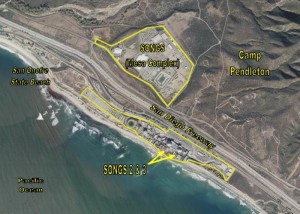 The historic significance of this environmental triumph goes beyond its invigorating effect on Southern California anti-nuclear activists. It has enlivened the people across the nation with the knowledge that an aging, malfunctioning nuclear power plant owned by huge corporations can be shut down using logic, sound science, law and determined opposition.
The historic significance of this environmental triumph goes beyond its invigorating effect on Southern California anti-nuclear activists. It has enlivened the people across the nation with the knowledge that an aging, malfunctioning nuclear power plant owned by huge corporations can be shut down using logic, sound science, law and determined opposition.
A pair of defective Mitsubishi-built generators doomed SONGS. Losing over a million dollars a day, SCE tried to expedite the process to get its damaged reactor online. That hope expired May 13 when the FOE and the Natural Resources Defense Council won a key decision from the Atomic Safety Licensing Board which ruled that starting Unit 2 would violate its existing operating permit. Unit 2 was required to run at full power or not run at all. Without public hearings with experts allowed, SCE could not fire up the crippled reactor.
“A recent ruling by an adjudicatory arm of the NRC, the Atomic Safety and Licensing Board, creates further uncertainty regarding when a final decision might be made on restarting Unit 2,” read a June 7 SCE press release. “Additional administrative processes and appeals could result in delay of more than a year. During this period, the costs of maintaining SONGS in a state of readiness to restart and the costs to replace the power SONGS previously provided would continue.”
Company officials assured the media June 7 that the energy grid can handle the power source loss mostly through successful conservation measures. The summer of 2012’s lack of SONGS power didn’t result in blackouts or even brownouts in Southern California largely because of SCE customers conserving 300 megawatts which is enough to provide electricity to 200,000 homes. The Southern California summer of 2013 also came and went without problems caused by SONGS’ demise.
“While Edison has been doing all that it can to prepare to supply power without help from the San Onofre plant, customer conservation is still a must,” said Erwin Furukawa, SCE senior vice president for customer service. “Now is the time to enroll in our conservation programs and start practicing conservation behaviors that can make a big difference for the grid.”
Not only did the electricity supply remain the same, so did SCE’s aggressive stance that the reactors were forced to be scrapped when it was the company, and the company alone that killed SONGS. “The premature shutdown of San Onofre is very unfortunate,” said Pete Dietrich, SCE’s chief nuclear officer and senior vice president, June 24. “We have an extraordinary team of men and women. We appreciate their years of dedicated service and will continue to extend to them the utmost respect and consideration.” [Our emphasis]
SCE will also continue to extend to its extraordinary team pink slips. The same day Dietrich dismissed any notion that something was wrong with San Onofre’s reactors, 600 non-union workers at the plant were shown the door. The company, in a disingenuous show of support “will work to ensure a fair process for the transition, including a job fair for displaced workers.”
 The firing of these 600 workers so soon after the attempted restart of Unit 2 failed brings to mind two questions besides asking what the difference between “displaced” and “canned” is to SCE: What were those workers actually doing at SONGS for the fifteen months the reactor sat idle? And couldn’t SCE use these highly paid and trained nuclear reactor professionals to dry cask up the huge amount of spent fuel rods now stuffed into SONGS’ two vulnerable spent fuel pools?
The firing of these 600 workers so soon after the attempted restart of Unit 2 failed brings to mind two questions besides asking what the difference between “displaced” and “canned” is to SCE: What were those workers actually doing at SONGS for the fifteen months the reactor sat idle? And couldn’t SCE use these highly paid and trained nuclear reactor professionals to dry cask up the huge amount of spent fuel rods now stuffed into SONGS’ two vulnerable spent fuel pools?
San Onofre minority owner San Diego Gas & Electric now wants to develop the larger half of SONGS – on the east side of the highway – which is the logical place to put all the dry cask-ready fuel rods sitting in the spent fuel pools right now. These rod assemblies could have been dry casked years ago.
SCE’s position that closing its malfunctioning reactors was “premature” and “unfortunate” underscores the gulf between the reality on the ground and the corporation’s bottom line. Edison International, the huge multi-billion dollar international powerhouse that owns SCE which serves 14 million people, now maintains that their 4.9 million rate payers pick up the tab for their debacle. SCE says its responsibility is to its shareholders.
The Spent Fuel Pools Threat
The closure of SONGS does not change the status of up to 1,800 tons of spent fuel rods left in susceptible pools that could crack, leak or be destroyed and expose the environment to huge amounts of radiation. According to SCE’s own plant virtual tour video, there is only a seven-day supply of emergency fuel to power the spent fuel rod pools should outside sources of power be lost due to an earthquake.
The nuclear reactor complex has far more extremely radioactive spent fuel rods in vulnerable spent fuel pools (SFPs) instead of sealed in hardened and airtight dry casks. Most of SONGS spent fuel is cool enough for this transportable entombment. It’s cheaper to leave the rods in the SFPs than moving them to dry casks.
 An earthquake of sufficient destructiveness to take down the electrical grid as well as destroy vulnerable access points to the plant on the adjacent Interstate 5 could, however, cut SONGS electric supply. If the water in the spent fuel pools ceases to be circulated by the pools’ electrical systems, the increasingly hot water will evaporate off and the rods will alight in a 900 degrees Celsius (1,173 degrees Kelvin) nuclear fire that cannot be extinguished with any amount of fresh or salt water.
An earthquake of sufficient destructiveness to take down the electrical grid as well as destroy vulnerable access points to the plant on the adjacent Interstate 5 could, however, cut SONGS electric supply. If the water in the spent fuel pools ceases to be circulated by the pools’ electrical systems, the increasingly hot water will evaporate off and the rods will alight in a 900 degrees Celsius (1,173 degrees Kelvin) nuclear fire that cannot be extinguished with any amount of fresh or salt water.
SCE has failed to implement expensive but more secure “dry casking” of spent nuclear fuel rods. The company says that fuel assemblies should stay in the pools for 7 to 10 years to cool down enough to be put in the sealed casks that cost $1 million each. So instead of dry casking rods years past being ready for it – SONGS opened in 1968 – SCE has kept loading more fuel rods into pools designed for fewer of them. According to the NRC, fuel rod assemblies can be transferred to dry casking within five years of being removed from the reactor.
“Only 25% of San Onofre’s highly toxic spent fuel is stored in dry casks,” PSR-LA said addressing the threat. “The remaining fuel is stored in pools, which remain vulnerable to earthquakes and power failure. If exposed, the fuel can self-ignite and release vast amounts of lethal radiation.”
That means that SCE, which has a 78.1 percent stake in SONGS and a $2.7 billion fund to completely cleanup and decontaminate the complex, hasn’t fortified its intensely radioactive rods that have to be kept out of the environment for up to a million years. The company says it needs $300 million to complete the fund. SCE is not alone in this venture, as San Diego Gas & Electric owns 20 percent of SONGS and 1.79 percent is owned by the city of Riverside.
“The high level waste–the spent fuel rods–has no place to be disposed of at present and will have to be put into dry cask storage on site for an extended period,” Hirsch said. Hirsch has analyzed the vulnerability of the spent fuel pools for decades and suggests that the dry casks be housed in hardened accessible bunkers with low profiles to protect against any number of terrorism scenarios.
It is a recommendation that has added urgency since the Friends of the Earth study was released. Called Reducing the Hazards of High‐Level Radioactive Waste in Southern California: Storage of Spent Power Reactor Fuel at The San Onofre Nuclear Station, [2.29 MB] the report revealed sourced information that 73 percent of the spent nuclear fuel at SONGS still sits in the two pools adjacent Units 1 and 2.
Cesium-137 makes up about 43 percent of the medium and long-lived radioactivity in the spent fuel, 168 million curies of which are in the pools. That amount of Cs-137, with a half-life of 30.2 years, is six times more than was released by all above-ground nuclear weapons testing and nearly 89 times the amount released by the Chernobyl nuclear meltdown in Belorussia in 1986.
The FOE report cited an NRC 2007 report emergency planning and response exercise in an imagined scenario of an earthquake at San Onofre severe enough that it cracks a pool which drains and catches fire. The NRC postulated that six hours after the spent fuel pools water drained, the exposed rods would catch alight sending about 40 million curies of cesium into the air.
“This is 150 percent more than released by all atmospheric nuclear weapons tests,” the FOE report says. “The resulting doses to people living within a 10‐mile radius would be in the lethal range.”
The fallout from such a spent fuel pool fire would impact Southern California far more than the Fukushima nuclear disaster initially impacted Japan. Around 80 percent of the March 11, 2011 triple meltdown airborne radioactivity blew over the Pacific Ocean to the east of the site with the remaining isotopes from the destroyed reactors raining down on Japanese land.
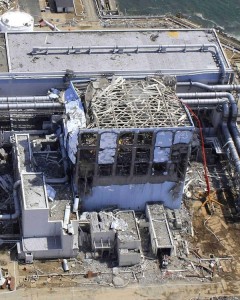 Even with that ratio, the government created a 12.4 mile evacuation zone that is a no-go area without official permission to enter. About 156,000 people remain displaced by the disaster, the worst nuclear catastrophe ever suffered on the planet, as of early 2013.
Even with that ratio, the government created a 12.4 mile evacuation zone that is a no-go area without official permission to enter. About 156,000 people remain displaced by the disaster, the worst nuclear catastrophe ever suffered on the planet, as of early 2013.
San Onofre would likely see the opposite ratio of fission fallout over land and water with most of the deadly cargo moving east over land before falling out. The city of San Clemente, two miles to the north of SONGS along the coast, could bear the brunt of this fallout though the prevailing west wind usually doesn’t blow from San Onofre into town. It usually blows through the plant towards the bulk of Camp Pendleton and Riverside Country to the east.
Nearly 65,000 people live in the tony coastal enclave and some have expressed concern about evacuation routes should SONGS start releasing radiation for any reason. The notoriously crowded San Diego 405 Freeway is the only real escape route which makes rapid evacuation of the city challenging at best.
One of the weightiest problems SONGS’ spent fuel poses is its weight, literally. San Onofre has so many tons of highly radioactive artificial isotopes on site that it makes the facility one of the largest radiation waste storage sites in the country. Unit 2’s core has yet to be removed and weighs in at over 112 tons with Unit 3’s core coming in at 91.5 tons. Respectively, the Units 2 and 3 contain 566.6 and 644.9 tons in their spent fuel pools. Unit 2’s core is still too hot to remove from the reactor core. It weighs another 112.4 tons.
Amazingly, SPFs across the United States don’t have “defense-in-depth” redundant nuclear safeguards. Unlike the nuclear reactor cores themselves, the pools are relatively light on containment. The SONGS pools are 17.5 feet off the ground in a seismically-reinforced building with a 3.16 inch welder liner plate made of stainless steel.
Spent fuel pools aren’t required to have emergency power back-up to make sure the water keeps circulating in the pools should the electricity go out. Some U.S. reactors recently were found to even be lacking gauges which indicate the water levels in the pools. One pool dropped to a potentially dangerous level because nobody bothered to look at it. Indeed, the FOE report says, there are nuclear reactor complexes that have suspect water restoration capabilities.
SCE’s SONGS video says that San Onofre has a 7-day supply of emergency generators fuel. A possible case of sabotage was discovered by SCE in October 2012 when it found someone had poured radiator fluid into one of the generator’s oil-based fuel supply. ABC 10News in San Diego reported last November 30 that the mixture would have caused more wear and could have precipitated the failure of the generator if it hadn’t been detected in a monthly check of the fuel supply. 10News also reported other suspicious acts at SONGS including important bolts that upon inspection were found to be loose and a package looking like a pipe bomb found onsite.
Clearly, reactors rank over spent fuel pools in regards to safety and have the giant concrete domes at San Onofre to prove it. Ironically, the pools catching fire would release vastly greater amounts of radiation into the environment than would a total core meltdown.
Fukushima Dai-ichi’s Unit 4 spent fuel pool has threatened to collapse for over two years but is now being buttressed by a superstructure being built around it. Nuclear experts and pundits alike have predicted that the top third of Japan, including Tokyo, would be lost if Unit 4’s pool crashes to the ground and ignites setting off an unforgettable fire. SONGS has twice as much spent fuel assemblies stuffed into its pools than Fukushima Dai-ichi does.
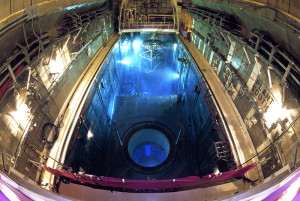 The fuel assemblies are incredibly hot and kill quickly. A “fresh” spent fuel assembly just out of a SONGS reactor would be radiating in excess of 10,000 rems per hour (100 Sv/hr). At three feet, a person would be fatally irradiated within minutes. Even after 100 years, standing within three feet of the bundle would incur a life-threatening dose.
The fuel assemblies are incredibly hot and kill quickly. A “fresh” spent fuel assembly just out of a SONGS reactor would be radiating in excess of 10,000 rems per hour (100 Sv/hr). At three feet, a person would be fatally irradiated within minutes. Even after 100 years, standing within three feet of the bundle would incur a life-threatening dose.
San Onofre’s spent fuel rods actually pack an extra punch. For 16 years SONGS utilized a contamination-concentrating high “burnup” nuclear fuel that saved SCE considerable amounts of expense. The fuel rods were left in the reactor longer to get the most out of the Uranium-235 energy. It also left them more intensely radioactive than normal spent fuel rod assemblies.
This has increased the temperature and radioactivity in the pools of hot rods. Once dry casked, says the FOE study, these hot boxes need to remain in surface storage to monitor and manage their radiation for up to 150 years before final internment at a high-level radiation dump somewhere yet to be determined.
There is little space left in SONGS’s two spent fuel pools according to 2001 figures. The Unit 1 pool was around 80 percent full and the Unit 2 pool was 82 percent filled. This was 12 years ago. Now stuffed with higher burn up rods, the pools are under even greater stress to cool and clean the circulating water. Neutron absorbing panels are deteriorating and in some cases bulged causing the spent fuel assemblies to be wedged into the under water storage racks. These panels were made initially to help soak up some of the extra radiation generated from the rods by placing them so close together.
“The conservatism/margins in spent fuel pool (SFP) criticality analyses have been decreasing,” says a 2010 NRC report. “The new rack designs rely heavily on permanently installed neutron absorbers to maintain criticality requirements. Unfortunately, virtually every permanently installed neutron absorber, for which a history can be established, has exhibited some degradation. Some have lost a significant portion of their neutron absorbing capability. In some cases, the degradation is so extensive that the permanently installed neutron absorber can no longer be credited in the criticality analysis.”
Worse yet the panels just get in the way of air circulation in case of emergency water loss according to the NRC. In the tightly-packed pool, the fuel assemblies are almost as close to each other as they were in the reactor core, about 9 to 10.5 inches apart. With the panels inserted, air and water circulation are restricted more which could lead to higher temperatures of the pool water.
“Conspicuous in its absence was any mention or discussion in the aftermath of the Fukushima accident by the NRC of reducing the density of spent fuel pool storage, which is substantially greater at U.S. reactors than at the Fukushima site,” says the Alvarez FOE report. “For instance the two pools at SONGS hold a comparable amount of spent fuel as the four damaged reactors at the Fukushima site. Underscoring the NRC’s conflicting claims about spent fuel pool dangers, the U.S. District Court of Appeals June 8, in a lawsuit brought on by Beyond Nuclear and the Natural Resources Defense Council, vacated the NRC’s ‘Waste Confidence Rule,’ found that the NRC had not provided adequate assurance regarding the safety of high‐density spent fuel pools.”
The NRC is playing a nuclear game of ‘chicken’ when it comes to spent fuel pools and it temporarily lost one round June 8. Until the commission produces remedies that will satisfy the court, it can’t license new reactors. Even with that obstacle, where a permanent U.S. repository for the radiating rods and other nuclear detritus can’t be agreed upon, the NRC is still on the hunt to build more nuclear reactors.
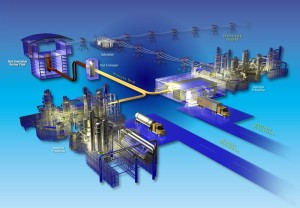 “The NRC is participating in pre-application reviews of the DOE’s Next Generation Nuclear Plant (NGNP),” said the NRC in a June 24 report obtained by EnviroReporter.com. “The NGNP would use nuclear fuel comprised of Tristructural-Isotopiccoated fuel particles contained in either fuel pebbles or prismatic fuel assemblies.”
“The NRC is participating in pre-application reviews of the DOE’s Next Generation Nuclear Plant (NGNP),” said the NRC in a June 24 report obtained by EnviroReporter.com. “The NGNP would use nuclear fuel comprised of Tristructural-Isotopiccoated fuel particles contained in either fuel pebbles or prismatic fuel assemblies.”
The maximum storage capacity in all operating U.S. reactors will be exhausted by 2015. Yet in response to the historic Court of Appeals Ruling, the NRC took a chapter out of the Environmental Protection Agency’s playbook, as EnviroReporter.com exposed in EPA Nukes Radiation Rules, and simply moved the goalposts and changed the rules.
“Historically, the Commission has chosen to generically address continued storage, and this approach was validated for appropriate circumstances by the D.C. Circuit Court of Appeals in the same decision that vacated and remanded the 2010 Waste Confidence Decision and rule,” said the NRC in the June 24 report. “Although the environmental impacts of spent nuclear fuel storage during the licensed life for operation may be site specific, the impacts of continued storage may be assessed generically because… changes in the environment around spent nuclear fuel storage facilities are sufficiently gradual and predictable to be addressed generically.”
Nuclear Regulatory Commission Con Jobs
America’s weather and geology vary at its 100 nuclear reactor sites in 31 states, creating different dangers. These varied threats could affect spent fuel pools in diverse and potentially disastrous ways.
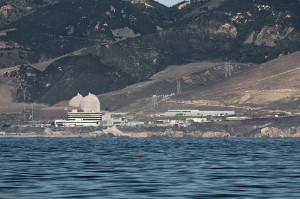 The San Onofre Nuclear Generating Station and the Diablo Canyon Power Plant 250 miles up the Southern California coast have earthquakes as the major environmental threat. Dozens of nuclear reactors and their spent fuel pools stretching across the tornado belt of the Midwest and the hurricane country of the South face entirely different sets of challenges.
The San Onofre Nuclear Generating Station and the Diablo Canyon Power Plant 250 miles up the Southern California coast have earthquakes as the major environmental threat. Dozens of nuclear reactors and their spent fuel pools stretching across the tornado belt of the Midwest and the hurricane country of the South face entirely different sets of challenges.
Yet the Nuclear Regulatory Commission judges all plants the same to determine if their spent fuel pools could remain safe stuffed with rods for 60 to 100 years after decommissioning of the reactor. The power plants would be approaching 60 years old themselves when the clock would start ticking on 60 more years of storage. The NRC says that there is almost no chance of a SFP fire in the scenarios it envisioned with the rods left in the pools for 120 years or more.
NRC released the 584-page Waste Confidence Generic Environmental Impact Statement Draft Report for Comment (3.88 MB) in August by its Waste Confidence Directorate, Office of Nuclear Material Safety and Safeguards. A blizzard of information and numbers come to a fairly uniform conclusion: nothing bad will ever happen to SFPs so they can all be treated generically as the same.
The draft report calls 60 years of continued storage after reactor closure its “short-term timeframe.” And far from expediting the transfer of vulnerable rod assemblies in the SPFs to dry casks, the commission says it’s not even necessary; “[I]t is feasible to safely store spent nuclear fuel in spent fuel pools in the short-term timeframe and in dry casks during the short-term, long-term, and indefinite timeframes.”
It helps when nature cooperates which is an assumption buried in the report that disregards statistics and common sense entirely. “Changes in the environment around spent nuclear fuel storage facilities are sufficiently gradual and predictable to be addressed generically.”
The NRC’s report, which will take public comments until November 27, has caused considerable outrage in the environmental and nuclear watchdog community. That was evident at an August 22 meeting of the NRC discussing the issue where the nearly unanimous commenters advocated that the SPFs be emptied to at least a lower density.
“No spent fuel pool is protected by containment or is required to have independent redundant cooling,” said Washington D.C. attorney Diane Curran in her August 1 comments submitted to the NRC. Curran represents an environmental coalition of dozens of groups, including Beyond Nuclear, addressing the issue. “They were meant for short-term cooling (~5 years) and weren’t intended to for multi-decade storage of 4-5 times more spent fuel than their original designs. Pools are not only vulnerable to accidents – as witnessed by the Fukushima accident – but they are prime terrorist targets.”
Curran and others including Dr. Gordon Thompson pointed out that the staff who wrote the NRC report actually recommend against transferring hot rods out of the SFPs into dry cask storage. They also questioned the scientific integrity of a study that would only consider a complete drainage of a SFP versus a partial drainage, which is actually worse.
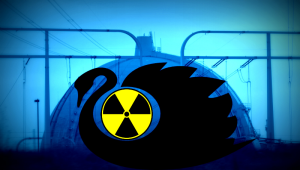 Indeed, if a spent fuel pool loses water enough to where the fuel assemblies are exposed to each other in air, they could catch alight with an unforgettable, and unstoppable, fire. The only hope of preventing that, short of successfully refilling the pool and keeping it that way, is to let it drain completely so at least air could circulate better cooling the exposed rods.
Indeed, if a spent fuel pool loses water enough to where the fuel assemblies are exposed to each other in air, they could catch alight with an unforgettable, and unstoppable, fire. The only hope of preventing that, short of successfully refilling the pool and keeping it that way, is to let it drain completely so at least air could circulate better cooling the exposed rods.
“[T]he Study ignores the impacts of aging and the potential for an attack on a pool and/or adjacent reactor to initiate a pool fire,” Curran commented. “Vulnerability of spent fuel storage pools to terrorist attack is perhaps the greatest risk of all.”
More scientific skullduggery came out this summer also courtesy of the Nuclear Regulatory Commission. A June 2013 NRC study about a Fukushima-style Mark I boiling water reactor at the Peach Bottom nuclear power station in Pennsylvania looked at that plant’s ability to prevent a huge earthquake from destroying one of its reactor’s spent fuel pools.
The 369-page study was called Consequence Study of a Beyond-Design-Basis Earthquake Affecting the Spent Fuel Pool for a U.S. Mark I Boiling Water Reactor (16.61 MB). The NRC used Peach Bottom as a “reference plant.” It is built on rock along the Susquehanna River in an area that has had a history over the last 50 years of having a peak horizontal acceleration eight times less than SONGS.
Sound science – and common sense – suggests that Peach Bottom and San Onofre can’t be generically lumped in together when it comes to earthquakes and spent fuel pools. The plants’ reactors and spent fuel pools are designed differently with SONGS situated on a dirt bluff in earthquake country. But no matter, as the report came up with conclusions that are alarmingly optimistic.
“This study shows the likelihood of a radiological release from the spent fuel after the analyzed severe earthquake at the reference plant to be about one time in 10 million years or lower,” the report says. “The Office of Nuclear Reactor Regulation’s regulatory analysis for this study indicates that expediting movement of spent fuel from the pool does not provide a substantial safety enhancement for the reference plant.”
Humans didn’t even begin to evolve on their own until five million years ago when we diverged from our last common lineage with chimpanzees. The NRC boldly states that one of the two SFPs at Peach Bottom Power Plant will last over 2,174 times as long as the 4,600 year old pyramids at Giza, Egypt. The figure would be laughable if it weren’t for the fact that the NRC is in charge of “regulating” America’s nuclear reactors and spent fuel pools and actually meant for the report to be taken seriously and save the nuclear industry millions of dollars because they wouldn’t have to do anything about their SFPs.
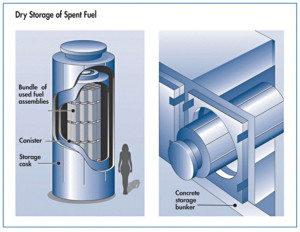 The NRC dismissal of the danger of spent fuel rods in pools was in admitted response to a 2002 report that Robert Alvarez published. Alvarez was part of a 2002 Institute for Policy Studies in-depth study of how vulnerable to terrorists were America’s spent fuel pools. It was accepted for publication in the peer-reviewed Science and Global Security journal in January 2003. The study, Reducing the Hazards from Stored Spent Power-Reactor Fuel in the United States, (816 KB) revealed the breadth of the spent fuel rods nuclear waste problem.
The NRC dismissal of the danger of spent fuel rods in pools was in admitted response to a 2002 report that Robert Alvarez published. Alvarez was part of a 2002 Institute for Policy Studies in-depth study of how vulnerable to terrorists were America’s spent fuel pools. It was accepted for publication in the peer-reviewed Science and Global Security journal in January 2003. The study, Reducing the Hazards from Stored Spent Power-Reactor Fuel in the United States, (816 KB) revealed the breadth of the spent fuel rods nuclear waste problem.
“Because of the unavailability of off-site storage for spent power-reactor fuel, the NRC has allowed high-density storage of spent fuel in pools originally designed to hold much smaller inventories,” Alvarez wrote. “To reduce both the consequences and probability of a spent-fuel-pool fire, it is proposed that all spent fuel be transferred from wet to dry storage within five years of discharge. The cost of on-site dry-cask storage for an additional 35,000 tons of older spent fuel is estimated at $3.5–7 billion dollars or 0.03–0.06 cents per kilowatt-hour generated from that fuel.”
Alarmed by the Alvarez report, Congress prompted the National Academy of Sciences to investigate. NAS released its own report in 2006 called “Safety and Security of Commercial Spent Nuclear Fuel Storage.” The NAS, America’s most august scientific body, minced no words describing the dangers.
“A loss‐of‐pool‐coolant event resulting from damage or collapse of the pool could have severe consequences,” the NAS study said. “It is not prudent to dismiss nuclear plants, including spent fuel storage facilities as undesirable targets for terrorists…under some conditions, a terrorist attack that partially or completely drained a spent fuel pool could lead to a propagating zirconium cladding fire and release large quantities of radioactive materials to the environment…Such fires would create thermal plumes that could potentially transport radioactive aerosols hundreds of miles downwind under appropriate atmospheric conditions.”
Not surprisingly, the NRC didn’t agree with either Alvarez or the NAS. “The NRC concluded that the fundamental recommendation of the 2003 Alvarez paper, namely that all spent fuel more than 5 years old be placed in dry casks through an expedited 10-year program costing many billions of dollars, was not justified,” the draft study reads. “[T]he NRC disagreed with some of the conclusions from the National Academies study, including the finding that the NRC might determine that the earlier movement of spent fuel from pools to dry cask storage would be prudent, depending on the outcome of plant-specific vulnerability analysis.”
Plants are vulnerable to environmental disasters such as tornados, flooding, hurricanes and earthquakes depending on where they’re located. Peach Bottom Power Plant several miles from the Maryland border in Virginia lost 35 of its 97 emergency sirens when Hurricane Sandy roared up the Eastern Seaboard. They went out, ironically, when the plant’s power went down as they had no battery backup, according to the Lancaster New Era.
Due for a $10 million overhaul, the system is currently arrayed in a 10 mile radius of Peach Bottom in four counties in Pennsylvania and Maryland. Counter intuitively the sirens don’t signal an evacuation, rather for the public to just turn on the radio and listen to the emergency broadcasting system.
After all, there’s only a one in 10 million year chance of something going wrong with its reactor pools – pools stuffed with spent nuclear fuel rods packed in a high-density configuration and suspended four stories in the air like the destroyed reactors in Fukushima.













Please participate in this action to change the waste storage plan at San Onofre…
http://conta.cc/1SePXmf
Our nuclear waste at SONGS is being handled by liars and thieves. Read more here… http://conta.cc/1WFtEGI
Southern California Edison issued a ‘white paper’ November 4 on its contention Mitsubishi left it, essentially, high and dry when it came to the defective generators that led to SONGS’ shutdown: http://assets.fiercemarkets.com/public/sites/energy/reports/1104songsWhitePaper.pdf
No: 13-089 October 28, 2013
CONTACT: Maureen Conley, 301-415-XXXX
NRC Extends Public Comment Period for Proposed Rule and Environmental Study
on Extended Storage of Spent Nuclear Fuel
The Nuclear Regulatory Commission is extending by three weeks, until December 20, the deadline for public comments on a proposed rule and supporting environmental study on the effects of extended storage of spent nuclear fuel beyond the licensed operating life of commercial reactors.
The NRC has also rescheduled the five public meetings on extended storage that were postponed due to the government shutdown and will hold an additional teleconference to receive public input on Dec. 9. The rescheduled meetings will be held Nov. 12 in Oak Brook, Ill.; Nov. 18 in Carlsbad, Calif.; Nov. 20 in San Luis Obispo, Calif.; Dec. 2 in Perrysburg, Ohio; and Dec. 4 in Minnetonka, Minn. Additional details about the meetings, including information on how to register, can be found on the NRC website. NRC staff will also host a public status update teleconference on Oct. 30. Details are on the website.
The proposed rule was published in the Federal Register September 13 for public comment through Nov. 27. Known as “waste confidence,” the proposed rule would replace a similar provision in NRC’s environmental regulations that was vacated last year by the U.S. Court of Appeals for the District of Columbia Circuit. The rule does not authorize extended storage of spent fuel at reactor sites – a separate license is required for that. Rather, waste confidence is a generic finding of the environmental impacts of storing spent fuel for extended periods beyond the licensed operating life of reactors. The draft Waste Confidence Generic Environmental Impact Statement forms the regulatory basis for the proposed rule. The draft statement is available on the NRC’s waste confidence webpage.
Public comments may be submitted several ways: Online through the federal government’s rulemaking website, http://www.regulations.gov using Docket ID NRC-2012-0246; by e-mail to Rulemaking.Comments@nrc.gov; by fax to 301-415-1101; by mail to Secretary, U.S. Nuclear Regulatory Commission, Washington DC 20555-0001, ATTN: Rulemakings and Adjudications Staff; or by hand delivery to 11555 Rockville Pike, Rockville, Md., between 7:30 a.m. and 4:15 p.m. on federal workdays.
Comments may also be provided orally or in writing at the public meetings, part of the agency’s extensive public outreach effort on the waste confidence project. All comments will be considered no matter how they are submitted.
Bit of confusion there between National Research Council and Nuclear Regulatory Commission – they should sort it out with the TLA ( Three Letter Acronym ) Commission.
As to whether a zirconium fire could happen, I’ve run across a lot of blogs assuring everyone that it had already happened. Haven’t seen any retractions yet. Zircalloy’s melting point is over 400 degrees Centigrade higher than the nichrome used in toaster heating elements. Fresh fuel is kept separate for the first few months, and after five years it can be dry casked, ie air cooled.
Apparently China is planning spent fuel storage which will use it for industrial or space heating, which seems a more practical approach. There’s plenty of other things more worthy of being worried about.
@John ONeill: The Hiroshima analogy is a unique way to justify nuclear power and in that context true. Unfortunately, it appears that your characterization of the zirconium cladding not burning isn’t in accord with a 2006 National Research Council of the National Academy of Sciences report called Safety and Security of Commercial Spent Nuclear Fuel Storage: Public Report:
“The first two of these objectives could be compromised by a terrorist attack that partially or completely drains the spent fuel pool.2 The committee will refer to such scenarios as “loss-of-pool-coolant” events. Such events could have several deleterious consequences; Most immediately, ionizing radiation levels in the spent fuel building rise as the water level in the pool falls. Once the water level drops to within a few feet (a meter or so) of the tops of the fuel racks, elevated radiation fields could prevent direct access to the immediate areas around the lip of the spent fuel pool building by workers. This might hamper but would not necessarily prevent the application of mitigative measures, such as deployment of fire hoses to replenish the water in the pool.
“The ability to remove decay heat from the spent fuel also would be reduced as the water level drops, especially when it drops below the tops of the fuel assemblies. This would cause temperatures in the fuel assemblies to rise, accelerating the oxidation of the zirconium alloy (zircaloy) cladding that encases the uranium oxide pellets. This oxidation reaction can occur in the presence of both air and steam and is strongly exothermic—that is, the reaction releases large quantities of heat, which can further raise cladding temperatures. The steam reaction also generates large quantities of hydrogen…”
“These oxidation reactions can become locally self-sustaining (i.e., autocatalytic3) at high temperatures (i.e., about a factor of 10 higher than the boiling point of water) if a supply of oxygen and/or steam is available to sustain the reactions. (These reactions will not occur when the spent fuel is under water because heat removal prevents such high temperatures from being reached). The result could be a runaway oxidation reaction—referred to in this report as a zirconium cladding fire—that proceeds as a burn front (e.g., as seen in a forest fire or a fireworks sparkler) along the axis of the fuel rod toward the source of oxidant (i.e., air or steam). The heat released from such fires can be even greater than the decay heat produced in newly discharged spent fuel.
“As fuel rod temperatures increase, the gas pressure inside the fuel rod increases and eventually can cause the cladding to balloon out and rupture. At higher temperatures (around 1800°C [approximately 3300°F]), zirconium cladding reacts with the uranium oxide fuel to form a complex molten phase containing zirconium-uranium oxide. Beginning with the cladding rupture, these events would result in the release of radioactive fission gases and some of the fuel’s radioactive material in the form of aerosols into the building that houses the spent fuel pool and possibly into the environment. If the heat from one burning assembly is not dissipated, the fire could spread to other spent fuel assemblies in the pool, producing a propagating zirconium cladding fire.
It catches fire, alright. NRC’s conflicting reports on spent fuel pools safety are none too few. But when it comes to the zirconium cladding, here’s what it concluded in 2001:
“… it was not feasible, without numerous constraints, to establish a generic decay heat level (and therefore a decay time) beyond which a zirconium fire is physically impossible.”
Thanks for your comment, John.
The difference between the Hiroshima bomb and spent nuclear fuel is that the bomb was built, with considerable difficulty , to explode; the fuel was designed to disperse heat.
Nearly twenty thousand Russian warheads have been broken down into fuel and will, in due course, wind up in spent fuel pools in the United States, where they will pose far less risk to humanity than they used to.
Inside a reactor pressure vessel, zirconium can react exothermicly with water if temperatures get high enough, but in a spent pool, the water is at atmospheric pressure. By the time temperatures have risen over 100 C, all the water will have evaporated, and until then steam will still be carrying heat away from the fuel. Solid zirconium will not burn, as it forms an impermeable oxide layer ( as does aluminium), and the melting point is 1855 Centigrade. Hence the NRC judgement that a spent fuel fire is ‘extremely unlikely.’
@John ONeill
From what I’ve read and from what Arnie Gundersen has stated is that the Spent Fuel Pool at Reactor 4 in Fukushima contains the equivalent of 1400 Hiroshima bombs.
Now I don’t know if that’s enough to kill everyone in Japan and the northern hemisphere, but it certainly would make for a very bad day.
(decades and/or centuries)
NOT telling people of the long term and short term destructive potential and risks of NUCLEAR WASTE is what’s really harmful.
@John ONeill: We would suggest reading the article again because we never said “spent fuel pools could kill everyone in Japan/ the northern hemisphere.” Especially pay attention to the parts describing the mechanics of a SFP fire and how hot it gets. Spoiler alert: it’s a lot hotter than a blowtorch and even the Nuclear Regulatory Commission knows – and has stated – how deadly it would be.
What the hell kind of cretins would call the closing of a nucler reactor several years after it’s use by date “Premature” ? These reactors were designed to last 40 years and if anything the situation with San Onofre has confirmed this was about right.
To be moved to dry storage, the heat output of spent fuel has to have dropped to the point where air cooling will prevent any damage to it. So if the pools drained, air cooling would continue – better than in a cask, where thick stainless steel walls impede convection.
Another reason why the NRC assigns a very low probability to radiation release from the pools is the lack of flammability of the rods. Zirconium powder will burn – so will iron powder – but try setting fire to a slab of steel. You can google video of zirconium tube being blowtorched without melting or burning. The uranium oxide which makes up ninety eight percent of the ‘meat’ of the fuel rods won’t burn either – it’s an oxide, you might as well try to burn stone. Telling people that spent fuel pools could kill everyone in Japan/ the northern hemisphere is dishonest and harmful.
Finally, crediting 300 megawatts of energy savings by customers with avoiding blackouts is a bit rich, when SONGS produced over 2,200 megawatts. As usual when a nuclear plant is shut down, most of the electricity deficit has been made up by burning gas or coal, CO2 emissions included.
One chance in 10 million years for any kind of black swan event at any of 100 nuclear sites! I believe that assertion of extremely remote situational and temporal risk is ludicrous on its face. Are there any insurance companies willing to take this assertion at face value and issue a policy based on this conclusion by the NRC? I think not! They would laugh them right out of their offices! No! They would have them frog-marched out of their offices, and then they would laugh until they could not laugh any more. They would be weeping and shaking their heads in disbelief! I would love to see such a scene enacted for a Hollywood film. It would be an opening scene of the greatest disaster movie every made! “The End of Mankind”
Bravo, Michael! This article drives home the point. People need to wake up and see the disaster that awaits them, if they do not act responsibly to protect themselves and their future generations. It’s simple, it’s too much risk, for far too long, in too many places.
Michael,
I am way beyond happy to see your new article about SONGS, as, based on the potential global disaster from removing the 1535 spent fuel rods from the Fukushima reactor #4, I have been very concerned and wondering about the plans for removal of the spent fuel rods from the two closed down reactors at SONGS.
I know that we were all overjoyed to hear that SONGS was shut down, but that is certainly not the end of this scary nuclear drama, which will continue to go on for many years into the future. Your article clearly details this very frightening prospect, along with both the scientific and political factors involved in the ongoing dangers which will remain, far beyond our lifetimes.
While Fukushima should have emphasized to our own Governmental nuclear authorities just how incredibly dangerous these spent fuel rods are, the EPA and the NRC, dishearteningly, seem to be just as devoted to downplaying the danger as is the Japanese government. Apparently it is always about MONEY….but it just never seems to be about human lives.
As a long time Red Cross disaster volunteer, I have been keeping after the Red Cross about making plans for a possible nuclear disaster at SONGS, which could affect millions of people….and which would involve other agencies, such as the Police and Fire departments as well as FEMA.
I plan to share your article with all of the above agencies,in order to let them know that the SONGS danger is NOT over, and will NOT be over for a great many years to come, and that disaster planning needs to be accomplished NOW!
Thank you again Michael, for this vitally needed investigation and report, and I will be anxiously looking forward to reading #2.